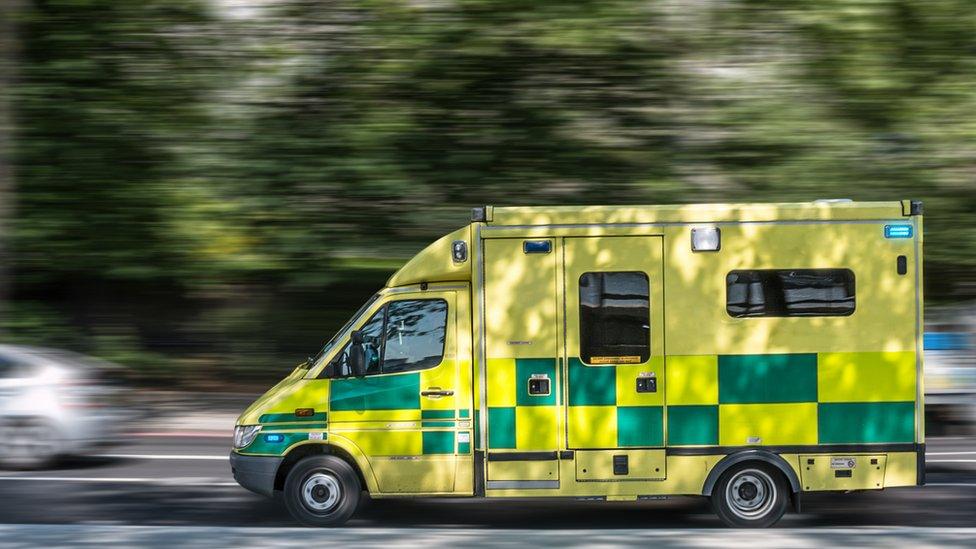How scrapping targets could help ambulances
- Published

The ambulance service in the UK receives about 30,000 calls a day. Or, to put it another way, by the time you've finishing reading this article 30 people will have rung 999 pleading for help.
The challenge for the hard-pressed control centre staff is working out which cases are genuinely life threatening - and which are not - so they can prioritise where to send crews.
How do they do that? They have a complex set of questions that have to help them determine how to categorise patients. There are about 7,500 different codes and a decision has to be made quickly.
Unsurprisingly it leads to mistakes being made. About a quarter of crews dispatched to life-threatening calls in England, which have a target of eight minutes to be reached, are called back before they reach the scene.
A similar situation arises in Northern Ireland, Scotland and, until last year, Wales.
But faced with growing pressures in the system - in Northern Ireland nearly one in two critical calls are not reached in eight minutes and in England it is over a third - ambulance bosses have started to re-think their approach.
The answer they seem to be reaching is to scrap the eight-minute target for all but the most immediately life-threatening cases.
Wales has already done this. Last October it reduced the number of calls it aims to answer in eight minutes to about 5% of the total, whereas previously it aimed to get to about a third in that timescale.
Scotland introduced a similar system last week and England has started piloting its own version in three areas this year.
Wales, like the rest of the UK, was struggling to respond to life-threatening calls within the eight-
So what gets chucked out of the eight-minute group? All sorts. Strokes, some road traffic accidents, people having fits and those experiencing chest pains.
This sounds radical - and risky. But ambulance bosses suggest it is not. Take stroke, for example. All the evidence suggests that what matters most is that a patient gets to a properly equipped stroke unit within an hour for tests and treatment. Whether an ambulance crew reaches them in eight, 10 or 12 minutes is of little consequence.
And by scrapping the eight-minute target for all but the most obviously life-threatening, the bosses argue ambulance services get the breathing space they need to properly consider whether an immediate dispatch is necessary, thereby cutting back on the unnecessary journeys.
And here's the clever bit: by doing that response times across the board improve because there are more ambulances available. Or that's the theory anyway.
The problem is we just don't really know. There has been little published on what impact this has had in the places where it is happening.
A major report on the changes is due to be published next spring. That will be telling.
If ambulance bosses have got this right it could prove to be the solution to the incredible pressures on the service that are being documented by the 91╚╚▒Č today. But get it wrong and lives will be put at risk. The stakes are high.